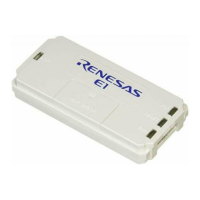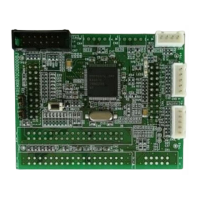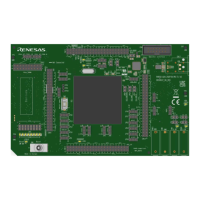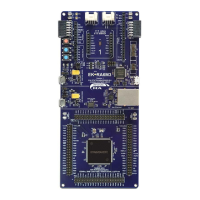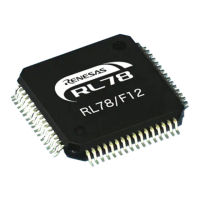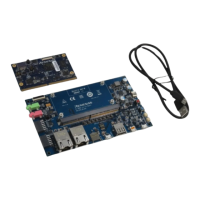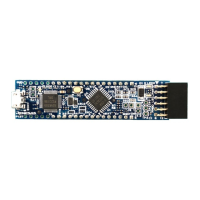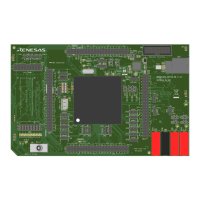1-6
1
OVERVIEW
32180 Group User’s Manual (Rev.1.0)
1.2 Block Diagram
Table 1.2.1 Features of the 32180 (1/2)
Functional Block Features
M32R-FPU CPU core • Implementation: Five-stage pipelined instruction processing (processed in six stages when
performing floating-point arithmetic)
• Internal 32-bit structure of the core
• Register configuration
General-purpose registers: 32 bits × 16 registers
Control registers: 32 bits × 6 registers
• Instruction set
16 and 32-bit instruction formats
100 discrete instructions and six addressing modes
• Internal multiplier/accumulator (32 bits × 16 bits + 56 bits)
• Internal single-precision floating-point arithmetic unit (FPU)
RAM • Capacity: 48 Kbytes, accessible with zero wait state
• The internal RAM can be accessed for reading or rewriting data from the outside independently of
the M32R-FPU by using the Real-Time Debugger, without ever causing the CPU performance to
decrease.
Flash memory • Capacity: 1 Mbytes (1,024 Kbytes), accessible with one wait state
• Durability: Rewritable 100 times
Bus specification • Fundamental bus cycle: 12.5 ns (when f(CPUCLK = 80 MHz)
• Logical address space : 4 Gbytes linear
• Internal bus specification : Internal 32-bit data bus (for CPU <-> internal flash memory and RAM access)
(or accessed in 64 bits when accessing the internal flash memory for
instructions)
: Internal 16-bit data bus (for internal peripheral I/O access)
• External area: Maximum 8 Mbytes (during processor mode)
• Extended external area: Maximum 8 Mbytes (1 Mbytes + 2 Mbytes × 3 blocks during external
extension mode)
• External data address: 20-bit address
• External data bus: 16-bit data bus
• Shortest external bus access: 1 BCLK period during read, 1 BCLK period during write
Multijunction timer (MJT) • 64-channel multi-functional timer
16-bit output related timer × 11 channels, 16-bit input/output related timer × 10 channels,
16-bit input related timer × 8 channels, 32-bit input related timer × 8 channels,
16-bit input related up/down timer × 3 channels, and 24-bit output related timer × 24 channels
• Flexible timer configuration is possible by interconnecting these timer channels.
• Interrupt request: Counter underflow or overflow and rising or falling or both edges or high or low level
from the TIN pin (These can be used as external interrupt inputs irrespective of timer operation.)
• DMA transfer request: Counter underflow or overflow and rising or falling or both edges or high or
low level from the TIN pin (These can be used as external DMA transfer request inputs
irrespective of timer operation.)
DMAC • Number of channels: 10
• Transfers between internal peripheral I/O’s or internal RAM’s or between internal peripheral I/O
and internal RAM are supported.
• Capable of advanced DMA transfers when used in combination with internal peripheral I/O
• Transfer request: Software or internal peripheral I/O (A-D converter, MJT, serial I/O or CAN)
• DMA channels can be cascaded. (DMA transfer on a channel can be started by completion of a
transfer on another channel.)
• Interrupt request: DMA transfer counter register underflow
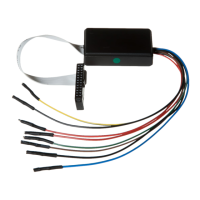
